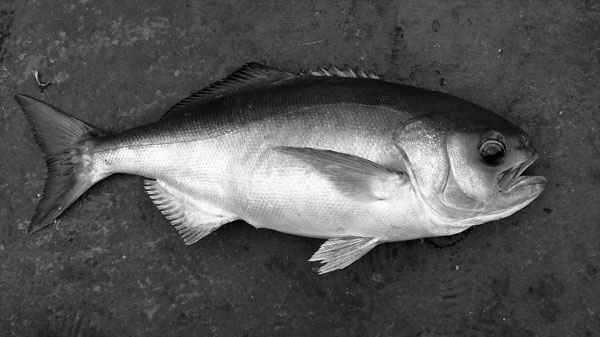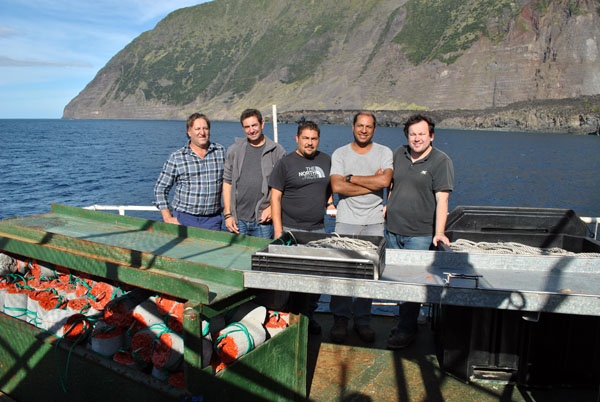Bluenose survey around Gough Island and McNish seamount
Blue Belt update: Bluenose survey
The bluenose warehou, or bluefish, is an important commercial fishery resource that complements the existing lobster (crayfish) fishery. Bluefish inhabit seamounts and coastal slope areas from Tristan to New Zealand. They are found between ~100 m down to over 1,000 m deep, gradually moving deeper as they grow larger. The first two years of their lives are spent high up in the water column, feeding on zooplankton before descending to the sea floor and maturing to adults. Once they mature, they remain close to the seafloor, rising some 20 – 30 m from the bottom to feed on a wide variety of squid, small fish and invertebrates.

Bluenose warehou, known as bluefish on Tristan
An important component of the Blue Belt programme is to help ascertain what a sustainable level of bluefish catch could be for the islands. A one-off survey around Gough Island and the McNish seamount carried out from MFV Edinburgh during March-April 2018 will collect biological data from a relatively "untouched" area compared with an actively fished seamount. Every hook will be monitored by Tristan Fishery Department staff. This will reveal critical information like the full range of sizes and ages at different depths in an untouched bluefish population, which will feed into an overall bluefish evaluation for Tristan.

On board MFV Edinburgh prior to the ship's departure from Tristan on 4th April 2018
are the Director of Fisheries James Glass (left),
three Tristan Sea Fisheries Officers (Warren Glass, Rodney Green and Adrian Swain), centre
and Cefas fisheries scientist Ramon Benedet, right.
